| View previous topic :: View next topic |
| Author |
Message |
Arninetyes


Joined: 24 Jun 2010
Posts: 312
Location: SoCal
Expire: 2013-03-26
|
 Posted: Tue Aug 24, 2010 1:40 am Post subject: Revelations, Disappointment: Quick Bellows Lenses Comparison Posted: Tue Aug 24, 2010 1:40 am Post subject: Revelations, Disappointment: Quick Bellows Lenses Comparison |
 |
|
Arninetyes wrote:
I recently picked up a nearly pristine Micro-Nikkor 55/3.5. I didn't have a lot of time, so I set up a quick test to make sure it worked as good as it looked. Since my D700 won't accept pre-Ai lenses, and I was too impatient to use my F2, I left the M ring off and put the 55 on my PB-4 bellows. I had my Micro 60/2.8D nearby, so I was going to do just compare the two. Then, I decided to throw in a Leica Elmar-R 100/4 Macro (bellows) and a recently acquired Rodenstock APO-Rodagon 75/4 enlarger lens. The 'quick-little' test wasn't so quick anymore, but I didn't have time for a comprehensive test. I used an old lens as the subject of the test and I focused on the white-filled, engraved letters surrounded by black enamel.
The results? Some surprises: a couple pleasant, others not.
I expected the 55/3.5 to be a bit sharper than the 60/2.8. It's quite a bit sharper. Fortunately, the 60/2.8 does a great job as my work lens, which is where it will stay.
While I always appreciated the Leica more than my 60/2.8, here I was very disappointed. Yes, the Leica was sharper than the 60, but not by much. The Micro 55/3.5 was somewhat sharper at 1:1 than the Leica. However, the Leica displayed serious blue/yellow CA at high contrast edges that were just out of focus. I've noticed the CA before, but under prior conditions, it was barely noticeable. Because of the high contrast subject, the fringing of the Leica was horrible, while the 60/2.8 (at 100%) had barely detectable blue/yellow CA.
The 55/3.5 was sharper than the 60/2.8 and the Leica 100/4, but it, too, had minor CA. Viewed at 100%, right at the edge of black/white lines, there was faint red/cyan fringing. As with the 60, there was so little, I wouldn't give it a second thought.
Then there was the Rodagon. Not only was it easily the sharpest lens of the four, but there was absolutely no trace of CA. Then again, that's what the "APO" is for.
In the end, I decided that the 60/2.8 is still quite usable as a work lens, the 55/3.5 is a great little gem that works as good as it looks, and the Rodagon is simply amazing. Then there's the Leica.
Early next month, I'm going to run a more controlled test to sort things out, and I'm going to add my El Nikkors to the test: a 63/2.8, 105/5.6, and 135/5.6. I'd like to test the Schneider, but I still don't have a decent, light-tight adapter for its odd thread size.
_________________
The longer I use autofocus lenses,
The greater my preference for manual focus grows. |
|
| Back to top |
|
 |
mo


Joined: 27 Aug 2009
Posts: 8979
Location: Australia
Expire: 2016-07-30
|
 Posted: Tue Aug 24, 2010 2:23 am Post subject: Posted: Tue Aug 24, 2010 2:23 am Post subject: |
 |
|
mo wrote:
Arninetyes welcome to the forum,I hope you can post some of these results,tests.
in case you are wondering images do not show up in a first post due to an anti spam measure...so if you want to upload them please do! 
_________________
Moira, Moderator 
Fuji XE-1,Pentax K-01,Panasonic G1,Panasonic G5,Pentax MX
Ricoh Singlex TLS,KR-5,KR-5Super,XR-10
Lenses
Auto Rikenon's 55/1.4, 1.8, 2.8... 50/1.7 Takumar 2/58 Preset Takumar 2.8/105 Auto Takumar 2.2/55, 3.5/35 Super Takumar 1.8/55...Macro Takumar F4/50... CZJ Biotar ALU M42 2/58 CZJ Tessar ALU M42 2.8/50
CZJ DDR Flektogon Zebra M42 2.8/35 CZJ Pancolar M42 2/50 CZJ Pancolar Exakta 2/50
Auto Mamiya/Sekor 1.8/55 ...Auto Mamiya/Sekor 2/50 Auto Mamiya/Sekor 2.8/50 Auto Mamiya/Sekor 200/3.5 Tamron SP500/8 Tamron SP350/5.6 Tamron SP90/2.5
Primoplan 1.9/58 Primagon 4.5/35 Telemegor 5.5/150 Angenieux 3.5/28 Angenieux 3,5/135 Y 2
Canon FL 58/1.2,Canon FL85/1.8,Canon FL 100/3.5,Canon SSC 2.8/100 ,Konica AR 100/2.8, Nikkor P 105/2.5
|
|
| Back to top |
|
 |
Arninetyes


Joined: 24 Jun 2010
Posts: 312
Location: SoCal
Expire: 2013-03-26
|
 Posted: Tue Aug 24, 2010 3:41 pm Post subject: Posted: Tue Aug 24, 2010 3:41 pm Post subject: |
 |
|
Arninetyes wrote:
| mo wrote: |
Arninetyes welcome to the forum,I hope you can post some of these results,tests.
in case you are wondering images do not show up in a first post due to an anti spam measure...so if you want to upload them please do!  |
Thanks!
I hadn't tried to upload anything yet, especially since this test was poorly controlled. But, if you're interested in what I saw on this one, I'll be happy to add a couple of pics. The next test will have more setup time and will result in better exposure control. As I said, this one was supposed to be just a 'quick and dirty' to make sure the little Micro 55/3.5 worked properly.
I didn't have time to set up my diffuser box, so rather harsh light was used. That's bad, because exposure is easier to control with diffuse light, but it's good, too, because the harsh light really highlighted a color fringing problem. To focus, I used the 'live view' function, zoomed in on the transition between light and dark, and tweaked the focus until it was as sharp as I could get it. The following pictures were normalized in size (magnification was a little different between them), cropped from 100% views, then reduced for upload. The highest magnification was the Micro 55; the lowest was the Leica. All were shot at f/8, attached to a Nikon PB-4 bellows, using a D700. Of course, since there is no connection between the lens and the camera, the EXIF data doesn't reflect the actual f/stop used.
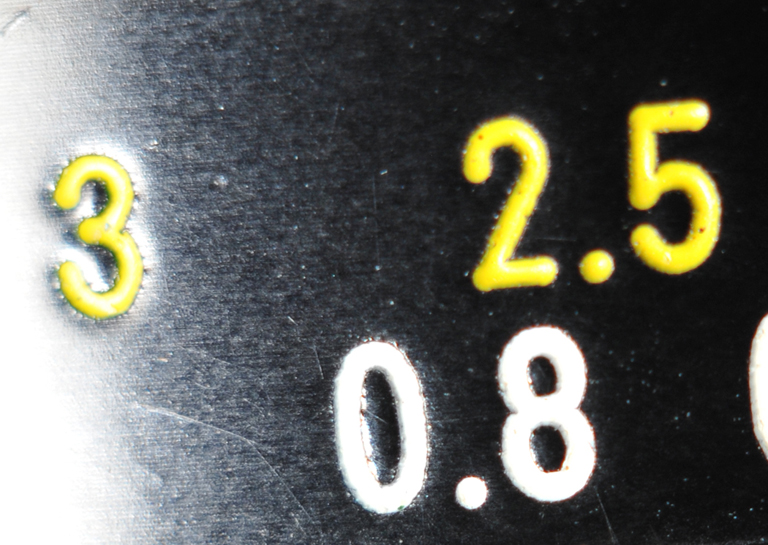
Micro-Nikkor 55/3.5. Each number is about 0.03 inches high. The 55 is sharp enough that tiny, fine scratches in the enamel and fine machine marks in the metal under the enamel are visible. Not bad for a 37-year-old lens. There is some slight red fringing around the 8 and the 0 to the right of the 8, but not enough to bother me with most subjects.
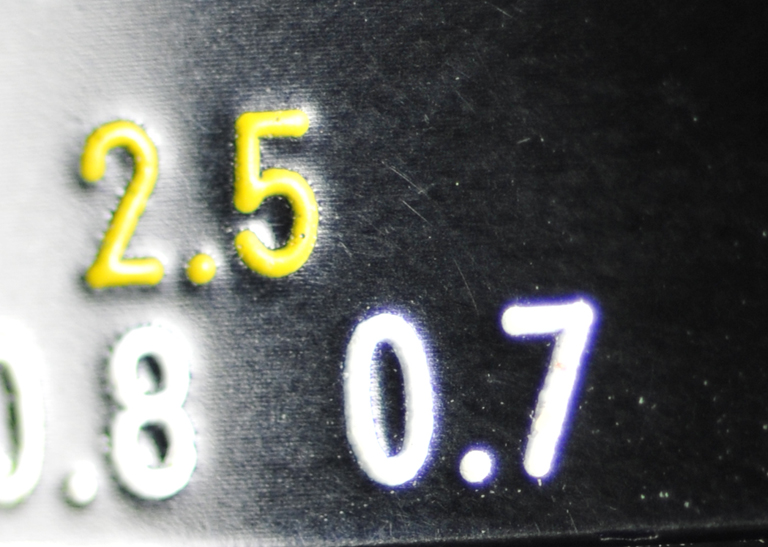
Leica Elmar R 100/4 Macro (bellows). Fine scratches and machine marks are visible, along with the usual dust, but the image isn't quite as sharp as the 55, partly because the lens doesn't seem quite as sharp, but also because of a shallower depth of field. Better controls on the next test should help with that, but nothing will help the color fringing: blue is clearly visible on the 0 and 7, and yellow is barely visible on the left-hand 0 where the image moves into overexposure.
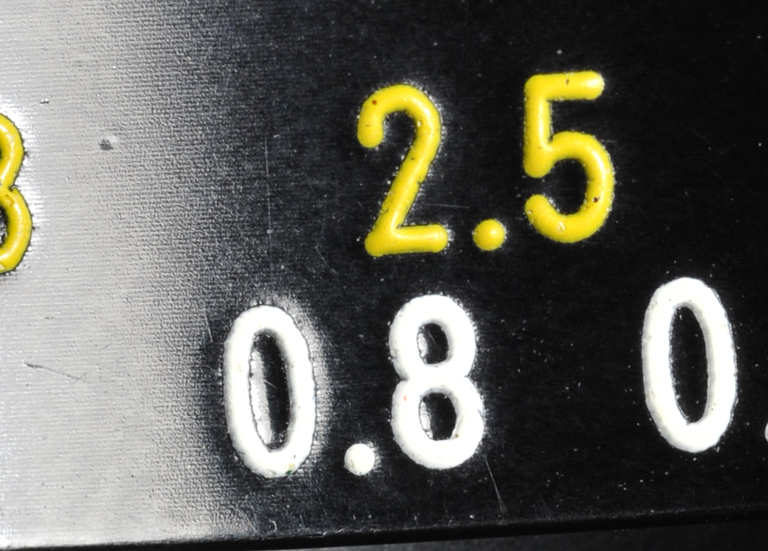
Rodenstock APO-Rodagon 75/4. Clearly the exposure is better because less of the lighted portion is overexposed. But, the sharpness blows away both the previous images, and there is no trace of chromatic aberration.
When I redo the test with better control, I'll make certain that exposures are as close as I can get them and magnification of each is the same. Results will be better, but it won't help lenses that have CA problems.
_________________
The longer I use autofocus lenses,
The greater my preference for manual focus grows. |
|
| Back to top |
|
 |
my_photography

Joined: 03 Nov 2008
Posts: 2772
Location: Pearl of the Orient
Expire: 2016-12-25
|
 Posted: Tue Aug 24, 2010 3:54 pm Post subject: Posted: Tue Aug 24, 2010 3:54 pm Post subject: |
 |
|
my_photography wrote:
Welcome, Arninetyes to the forum.
Interesting result you have there with the 5 lenses. Looking forward for your more control tests.
_________________
Zeiss: CJZ Flektogon 20/2.8, CJZ Flektogon 20/4, , CJZ Pentacon 29/2.8, CJZ Flektogon 35/2.4, CJZ Pancolar 50/1.8, Tessar 50/2.8, Biotar 7.5cm/1.5, CJZ Pancolar 80/1.8, CJZ Sonnar 135/3.5, CJZ Pentacon 135/2.8 CJZ Sonnar 200/2.8
Other Germany: Meyer Primoplan 50/1.8, Meyer Trioplan 100/2.8
Takumar: SMC 50/1.4 Super Tak 55/2, Super Tak 85/1.9, S-M-C 135/3.5, Super Tak 150/4
Russian: Zenith 16/2.8, Mir-24M 2/35, Volna-9 50/2.8, Helios 44M (58/2), Helios 44M-3 MC (58/2), Helios 40 (85/1.5), Tair 11A (135/2.8 )
Others: Sears 28/2.8, Sankor 35/2.8, Enna M�nchen Tele-Ennalyt 135/3.5
Zoom Sigma Zoom 28-85/3.5-4.5
|
|
| Back to top |
|
 |
gillbod
Joined: 24 Aug 2010
Posts: 28
|
 Posted: Tue Aug 24, 2010 5:31 pm Post subject: Posted: Tue Aug 24, 2010 5:31 pm Post subject: |
 |
|
gillbod wrote:
thanks for doing the test. i'm on the search for a good apochromatic lens, and the rodenstock hadn't occurred to me, although i'd like something where i can have a helicoid and focus to infinity. anyway, i digress.
as i see it, most of the aberrations displayed in all these lenses are coming from longitudinal chromatic aberration, i.e. bokeh ca which is affecting the out of focus regions.
the rodenstock (even though its performance seems great) is at an advantage in that all of the image is in focus.
the elmar is showing bad longitudinal ca, but there's not much to go by in judging lateral ca. there's green fringing on the left, and a blueish tinge on the right (really odd to me, i'd expect it to be redder). but this ca is visible because there are large portions of the shot which are out of focus.
the micro nikkor is showing a bit of red-tinging in the area in front of the plane of focus, which is to be expected (as opposed to what the elmar is producing!), but again, it has out of focus areas in it which are showing the areas of longitudinal ca.
the tests show the rodenstock in a very good light, but i'm still curious as to how it might look if things were set up a little bit differently. |
|
| Back to top |
|
 |
Arninetyes


Joined: 24 Jun 2010
Posts: 312
Location: SoCal
Expire: 2013-03-26
|
 Posted: Tue Aug 24, 2010 6:19 pm Post subject: Posted: Tue Aug 24, 2010 6:19 pm Post subject: |
 |
|
Arninetyes wrote:
| gillbod wrote: |
| the tests show the rodenstock in a very good light, but i'm still curious as to how it might look if things were set up a little bit differently. |
Absolutely! That's why I'm planning to do a proper test with good controls. This was a spur of the moment hack. I will say this about the Rodenstock: these were crops of larger images. Following is an out-of-focus area on the Rodenstock, and there is no visible color fringing.
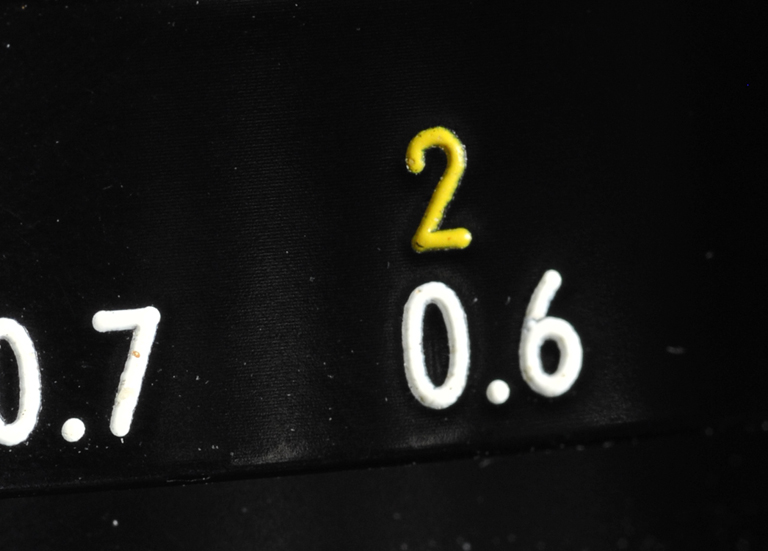
Proper controls won't change how I set the focus, but they *should* improve depth of field on the other lenses and give a better idea of the sharpness of which they are capable. If I use a flat subject, I won't have to worry about depth of field, but where's the fun in that?
_________________
The longer I use autofocus lenses,
The greater my preference for manual focus grows. |
|
| Back to top |
|
 |
Arninetyes


Joined: 24 Jun 2010
Posts: 312
Location: SoCal
Expire: 2013-03-26
|
 Posted: Tue Aug 24, 2010 7:27 pm Post subject: Posted: Tue Aug 24, 2010 7:27 pm Post subject: |
 |
|
Arninetyes wrote:
gillbod,
I've posted a photo taken with the Leica to show that yes, it does take decent images. I took this several months ago of a lens I was going to put up for sale (among others I did sell), using the same PB-4. Of course, this one was in a diffusion box and was taken with better lighting and a bit more care. First pic is the full shot; the second is a 100% crop of a focused area, third is a 100% crop of an out-of-focus area. I just pulled this from a raw file today and used no sharpening in development.
There is barely any sign of fringing, and you have to look very carefully at 100% to see it. Then again, this is nowhere near the magnification of the previously posted shot. Magnification may be the actual limit of this Leica model, despite 'Macro' being part of its name.
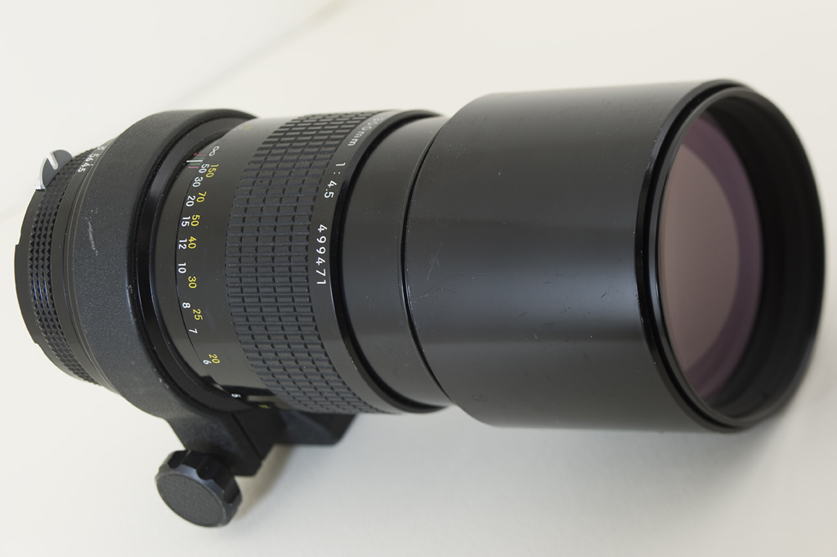
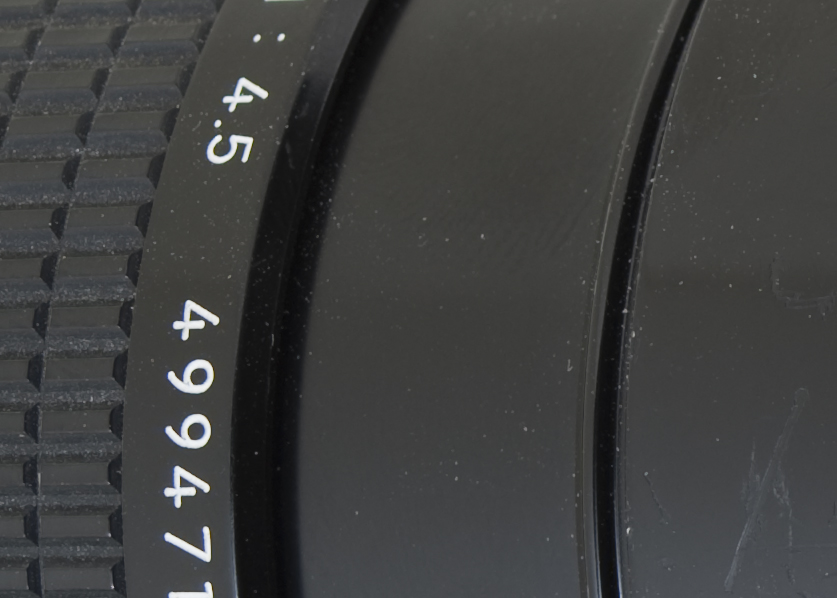
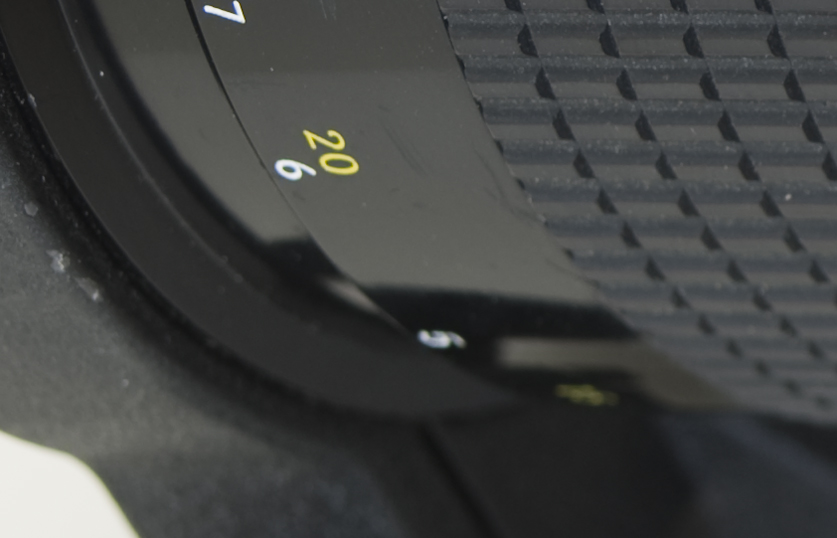
_________________
The longer I use autofocus lenses,
The greater my preference for manual focus grows. |
|
| Back to top |
|
 |
patrickh


Joined: 23 Aug 2007
Posts: 8551
Location: Oregon
Expire: 2011-11-18
|
 Posted: Wed Aug 25, 2010 5:09 pm Post subject: Posted: Wed Aug 25, 2010 5:09 pm Post subject: |
 |
|
patrickh wrote:
Welcome indeed and thanks for this test/comparison. Your results seem in line with various observations about these different lenses over a considerable period. The Rodenstock APO series is well known to be magnificent and your sample certainly supports the conclusion
patrickh
_________________
DSLR: Nikon D300 Nikon D200 Nex 5N
MF Zooms: Kiron 28-85/3.5, 28-105/3.2, 75-150/3.5, Nikkor 50-135/3.5 AIS // MF Primes: Nikkor 20/4 AI, 24/2 AI, 28/2 AI, 28/2.8 AIS, 28/3.5 AI, 35/1.4 AIS, 35/2 AIS, 35/2.8 PC, 45/2.8 P, 50/1.4 AIS, 50/1.8 AIS, 50/2 AI, 55/2.8 AIS micro, 55/3.5 AI micro, 85/2 AI, 100/2,8 E, 105/1,8 AIS, 105/2,5 AIS, 135/2 AIS, 135/2.8 AIS, 200/4 AI, 200/4 AIS micro, 300/4.5 AI, 300/4.5 AI ED, Arsat 50/1.4, Kiron 28/2, Vivitar 28/2.5, Panagor 135/2.8, Tamron 28/2.5, Tamron 90/2.5 macro, Vivitar 90/2.5 macro (Tokina) Voigtlander 90/3.5 Vivitar 105/2.5 macro (Kiron) Kaleinar 100/2.8 AI Tamron 135/2.5, Vivitar 135/2.8CF, 200/3.5, Tokina 400/5,6
M42: Vivitar 28/2.5, Tamron 28/2.5, Formula5 28/2.8, Mamiya 28/2.8, Pentacon 29/2.8, Flektogon 35/2.4, Flektogon 35/2.8, Takumar 35/3.5, Curtagon 35/4, Takumar 50/1.4, Volna-6 50/2.8 macro, Mamiya 50/1.4, CZJ Pancolar 50/1,8, Oreston 50/1.8, Takumar 50/2, Industar 50/3.5, Sears 55/1.4, Helios 58/2, Jupiter 85/2, Helios 85/1.5, Takumar 105/2.8, Steinheil macro 105/4.5, Tamron 135/2.5, Jupiter 135/4, CZ 135/4, Steinheil Culminar 135/4,5, Jupiter 135/3.5, Takumar 135/3.5, Tair 135/2.8, Pentacon 135/2.8, CZ 135/2.8, Taika 135/3.5, Takumar 150/4, Jupiter 200/4, Takumar 200/4
Exakta: Topcon 100/2.8(M42), 35/2.8, 58/1.8, 135/2.8, 135/2.8 (M42), Kyoei Acall 135/3.5
C/Y: Yashica 28/2.8, 50/1.7, 135/2.8, Zeiss Planar 50/1.4, Distagon 25/2.8
Hexanon: 28/3.5, 35/2.8, 40/1.8, 50/1.7, 52/1.8, 135/3.2, 135/3.5, 35-70/3.5, 200/3.5
P6 : Mir 38 65/3.5, Biometar 80/2.8, Kaleinar 150/2.8, Sonnar 180/2.8
Minolta SR: 28/2.8, 28/3.5, 35/2.8, 45/2, 50/2, 58/1.4, 50/1.7, 135/2.8, 200/3.5
RF: Industar 53/2.8, Jupiter 8 50/2
Enlarg: Rodagon 50/5,6, 80/5,6, 105/5.6, Vario 44-52/4, 150/5.6 180/5.6 El Nikkor 50/2,8,63/2.8,75/4, 80/5,6, 105/5.6, 135/5.6 Schneider 60/5.6, 80/5.6, 80/4S,100/5.6S,105/5.6,135/5.6, 135/5.6S, 150/5.6S, Leica 95/4 |
|
| Back to top |
|
 |
Arninetyes


Joined: 24 Jun 2010
Posts: 312
Location: SoCal
Expire: 2013-03-26
|
 Posted: Thu Aug 26, 2010 4:02 pm Post subject: Posted: Thu Aug 26, 2010 4:02 pm Post subject: |
 |
|
Arninetyes wrote:
Thanks! But, when I redo the comparison with sufficient controls, then I'll be much more confident in the results.
Probably in early September I'll be able to do a better controlled comparison. Based on this last comparison and a bit of experience with all the lenses (except the Micro 55), I think what I'll find will be that all the lenses will have improved sharpness, once I deal with the depth of field. Well, except for the Rodagon. I don't see how I could improve sharpness over the posted pics!
Who knows, maybe I'll toss in a couple more lenses, just for fun!
_________________
The longer I use autofocus lenses,
The greater my preference for manual focus grows. |
|
| Back to top |
|
 |
|
|
